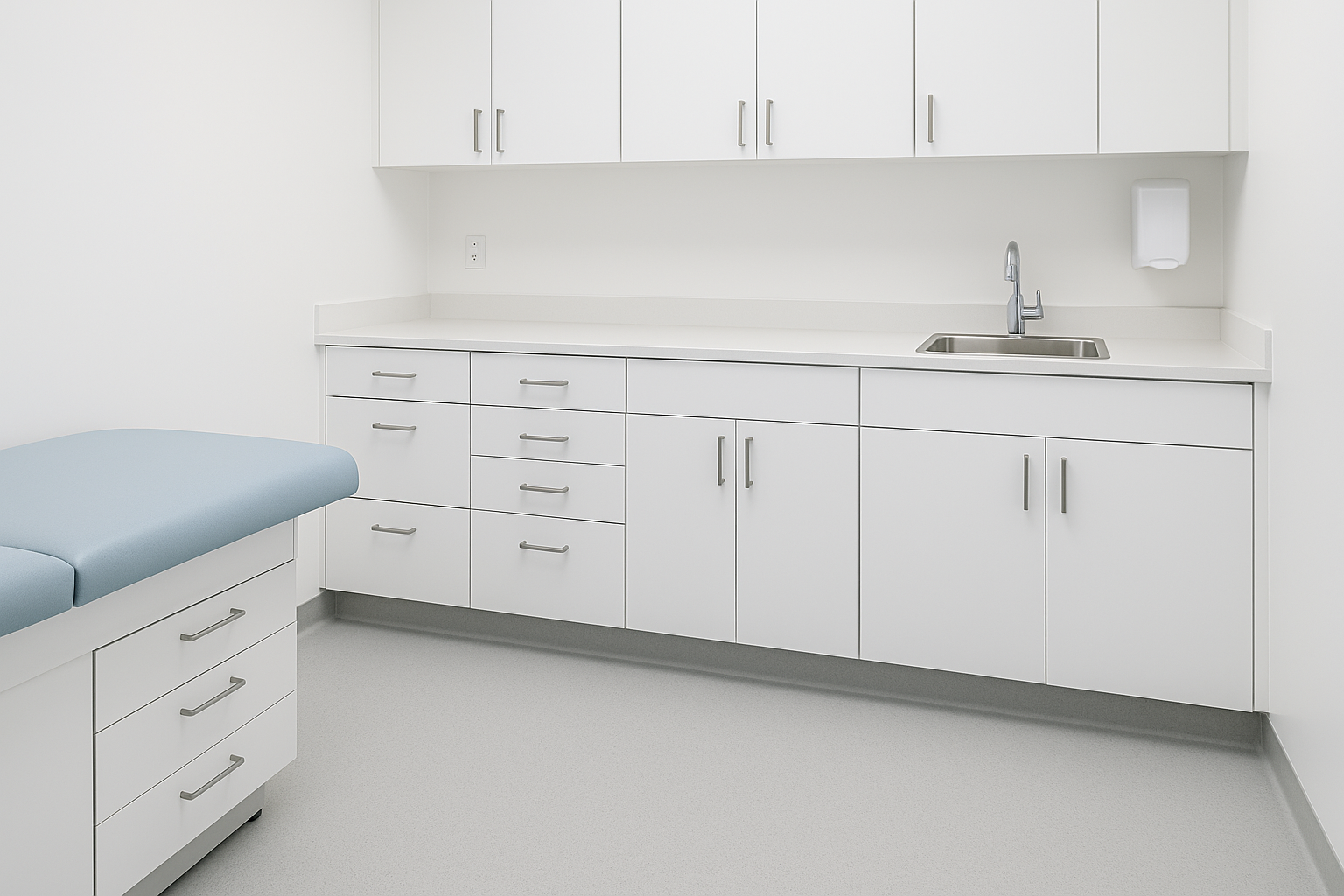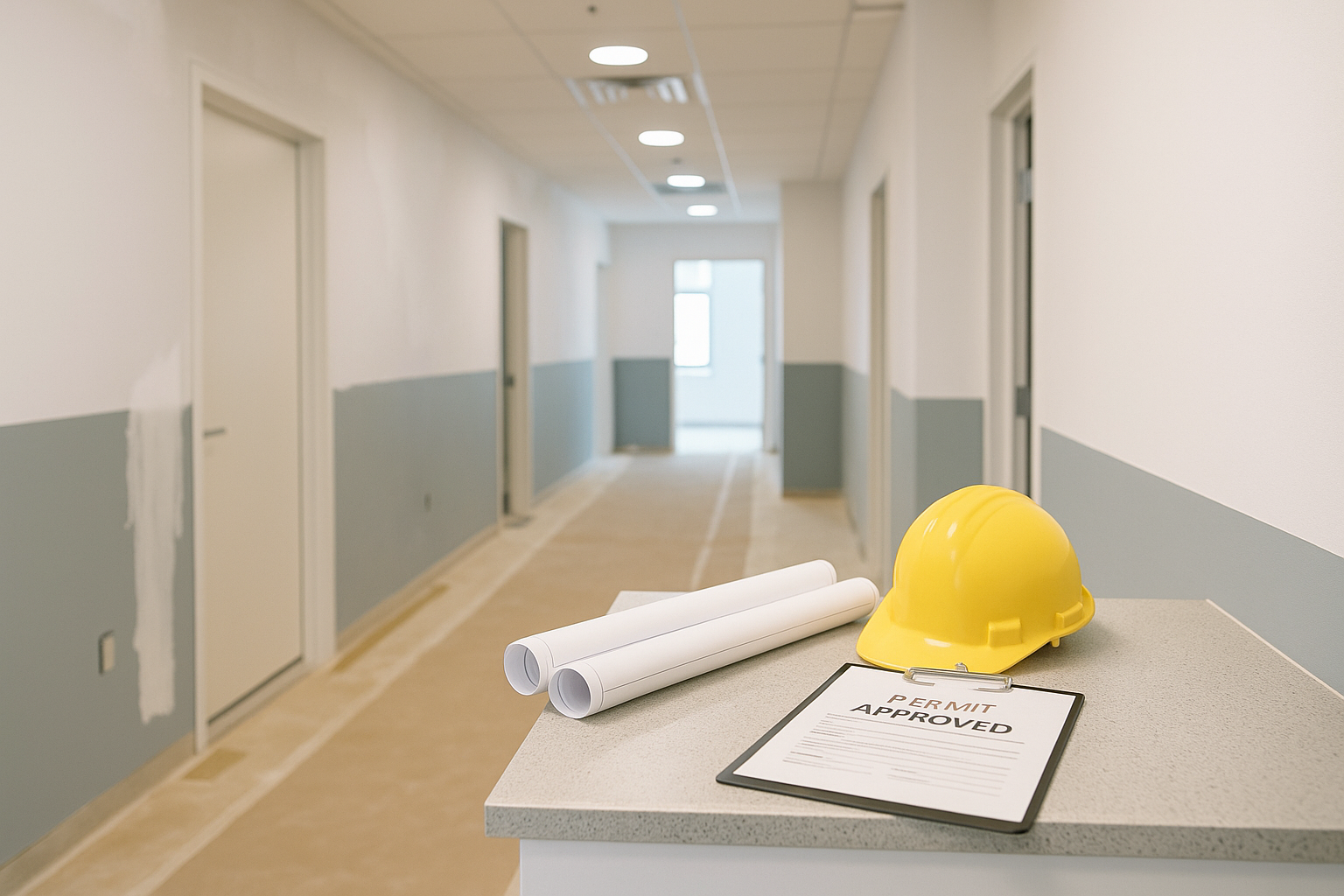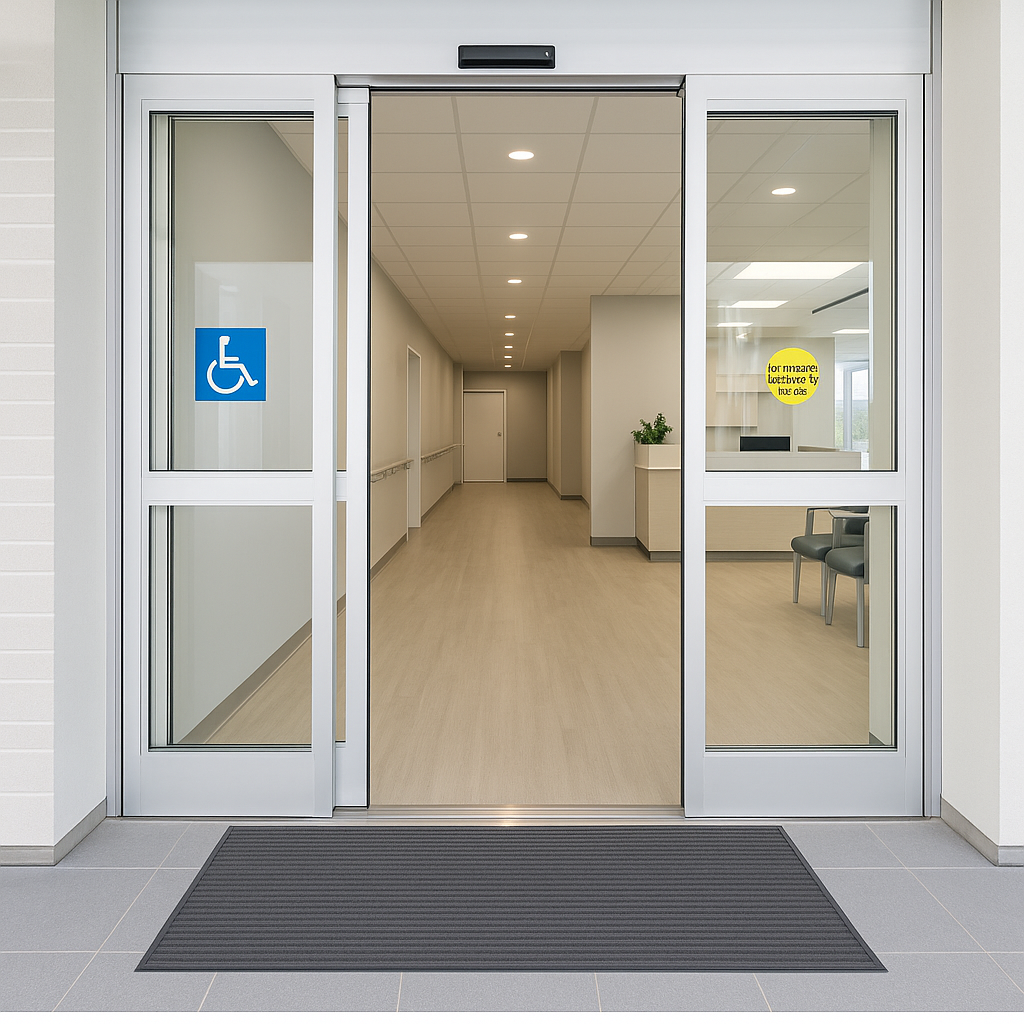Yuspendisse quis lorem urna. Donec sed dui mollis, elementum enim quis.
Choosing the Right Materials for Infection Control in Healthcare Settings
Choosing the Right Materials for Infection Control in Healthcare Settings
Infection prevention is a top priority in any healthcare environment. Whether you’re managing a walk-in clinic, pharmacy, audiology office, or veterinary clinic, the materials you choose during your renovation directly impact hygiene, durability, and regulatory compliance. For medical offices in Ontario, where both patient volume and compliance expectations are high, using the right materials is not optional — it’s essential.
At Reno Ethics Contracting, we specialize in healthcare-specific renovations that go beyond aesthetics to meet infection control standards. In this article, we’ll walk you through which materials are best for high-risk areas and how thoughtful design choices can improve both safety and functionality.
Why Infection-Resistant Materials Matter
Healthcare environments are unique. Surfaces are constantly exposed to biological contaminants, disinfectants, and high foot traffic. Unlike residential or general commercial spaces, medical offices must be built with materials that can:
- Withstand frequent cleaning and disinfection
- Resist microbial growth
- Avoid harboring moisture or organic matter
- Meet public health and safety regulations
Using non-compliant or porous materials can lead to hidden bacteria buildup, degraded finishes, and — ultimately — patient risk.
Best Materials for Infection Control in Medical Offices
Here are some of the top materials we recommend for Ontario-based medical renovations:
1. Seamless Vinyl or Homogeneous Sheet Flooring
Forget tiles and grout lines. Continuous sheet vinyl flooring is a top choice for clinics and treatment rooms. It’s:
- Easy to sanitize
- Moisture-resistant
- Slip-resistant (when textured appropriately)
- Seam-weldable to create completely sealed surfaces
This type of flooring is ideal for exam rooms, procedure areas, and washrooms.
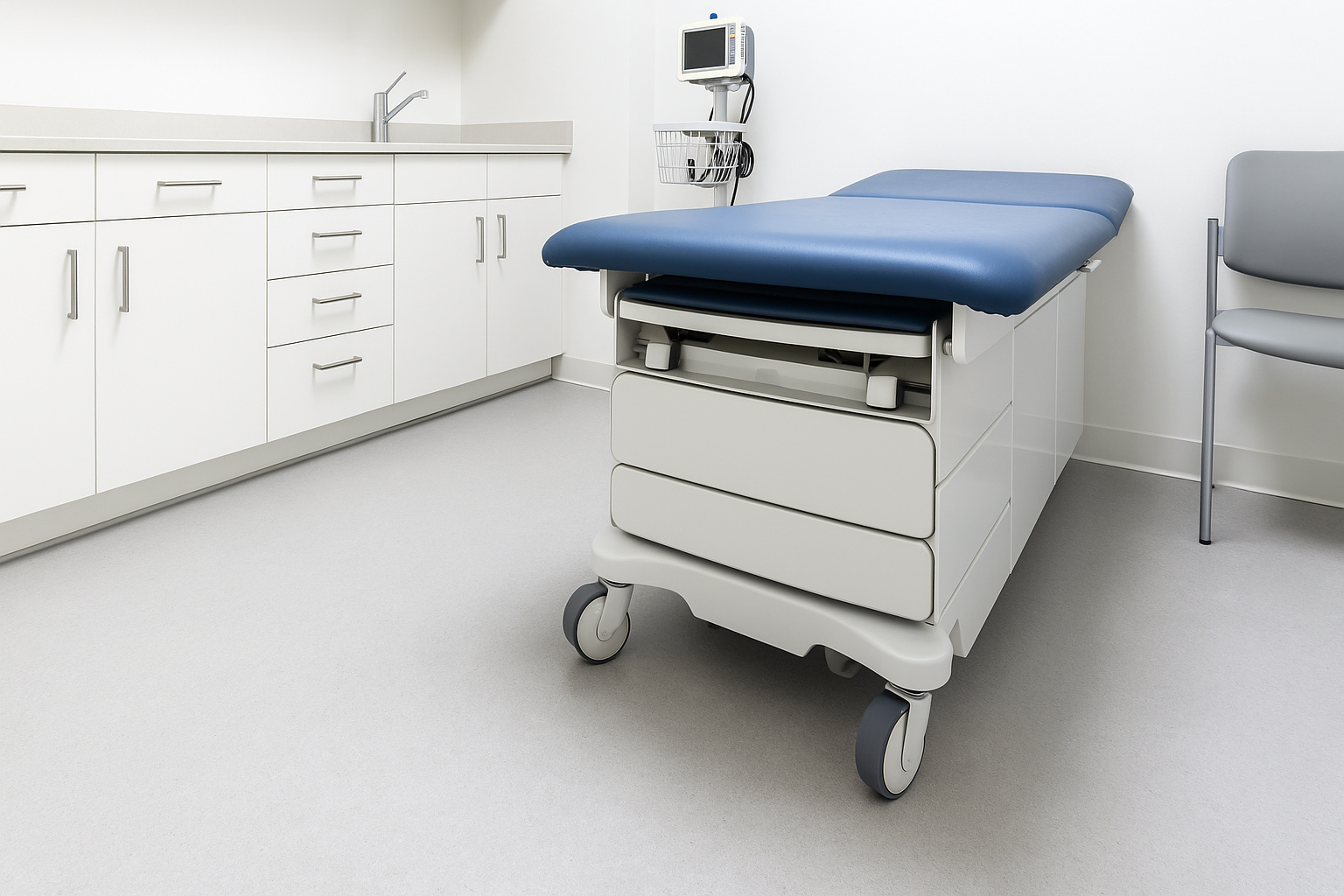
2. Solid Surface or Compact Laminate Countertops
Materials like Corian and Trespa are popular for good reason. They are:
- Non-porous and seamless
- Resistant to disinfectants and chemicals
- Mold and mildew-resistant
- Long-lasting and easy to repair
They’re especially effective for labs, sinks, reception desks, and any high-contact surface in a clinical setting.
3. Antimicrobial Wall Protection
Adding protective wall panels made from PVC or FRP (fiberglass-reinforced plastic) can prevent contamination in high-touch zones like hallways and waiting areas. These panels are:
- Impact-resistant
- Easy to clean
- Available in hygienic, smooth finishes
Plus, they help reduce maintenance costs in the long term.
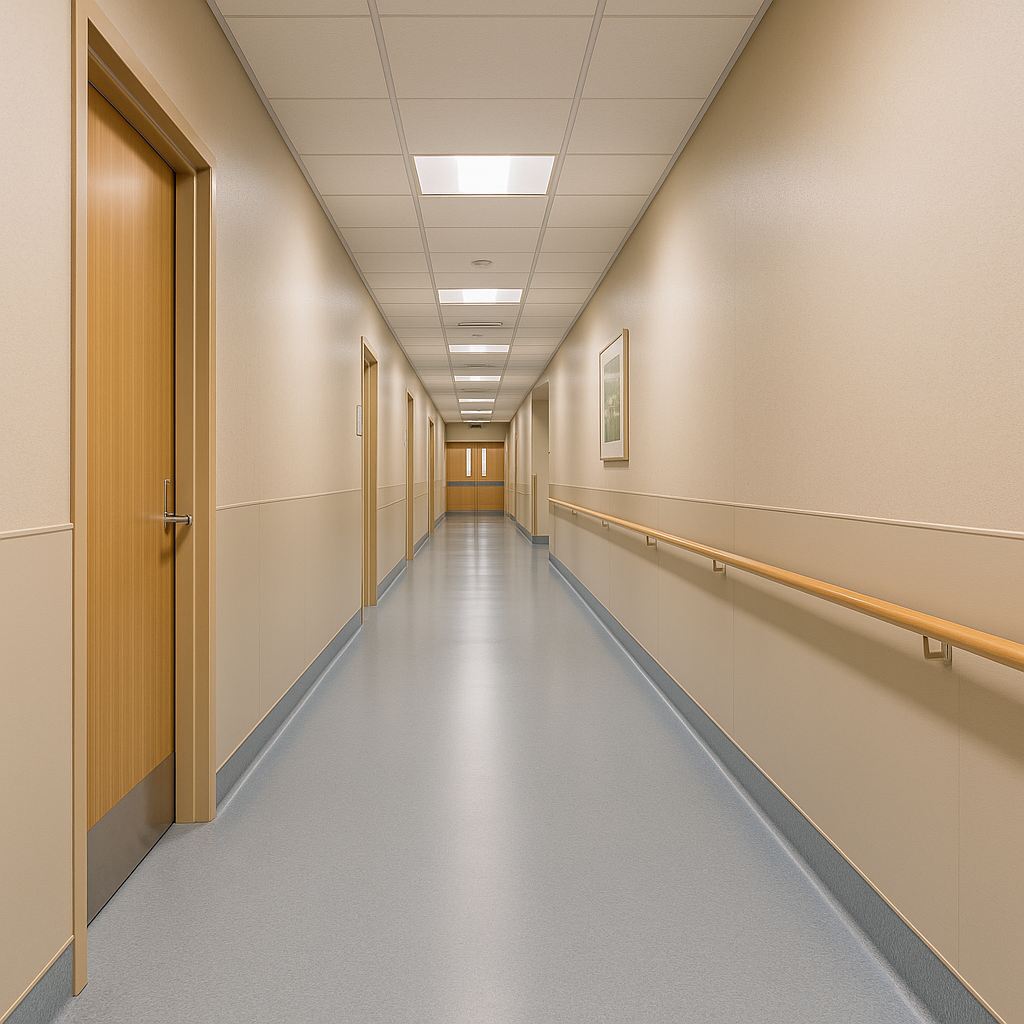
4. Healthcare-Specific Paint Finishes
Standard paints often don’t cut it. Use high-performance coatings specifically made for medical settings. These paints:
- Include antimicrobial agents
- Resist staining and wear
- Offer low-VOC emissions (important for indoor air quality)
We recommend semi-gloss or satin finishes for most healthcare environments.
5. Sealed Cabinetry and Millwork
Custom cabinetry in clinics must be sealed, durable, and designed to prevent dust and debris buildup. Materials like thermolaminated MDF or coated particle board are often used, with sealed edges and moisture-resistant coatings.
Material Selection & Ontario Building Code Compliance
It’s not just about hygiene — your materials must also meet provincial building codes, public health regulations, and, in many cases, AODA (Accessibility for Ontarians with Disabilities Act) standards.
Reno Ethics Contracting works with healthcare consultants and inspectors to ensure that every renovation project complies with:
- Public Health Ontario guidelines
- IPAC (Infection Prevention and Control) principles
- Fire, safety, and accessibility standards
Final Thoughts
When renovating a medical office, every material decision should support your infection prevention strategy. Clean design, non-porous finishes, and regulatory compliance are all crucial elements that impact safety, longevity, and patient trust.
If you’re planning a healthcare renovation in Ontario and want to future-proof your space with infection control in mind, contact Reno Ethics Contracting today. We’ll help you select the right materials — and build them into a space that keeps both patients and staff safe.

